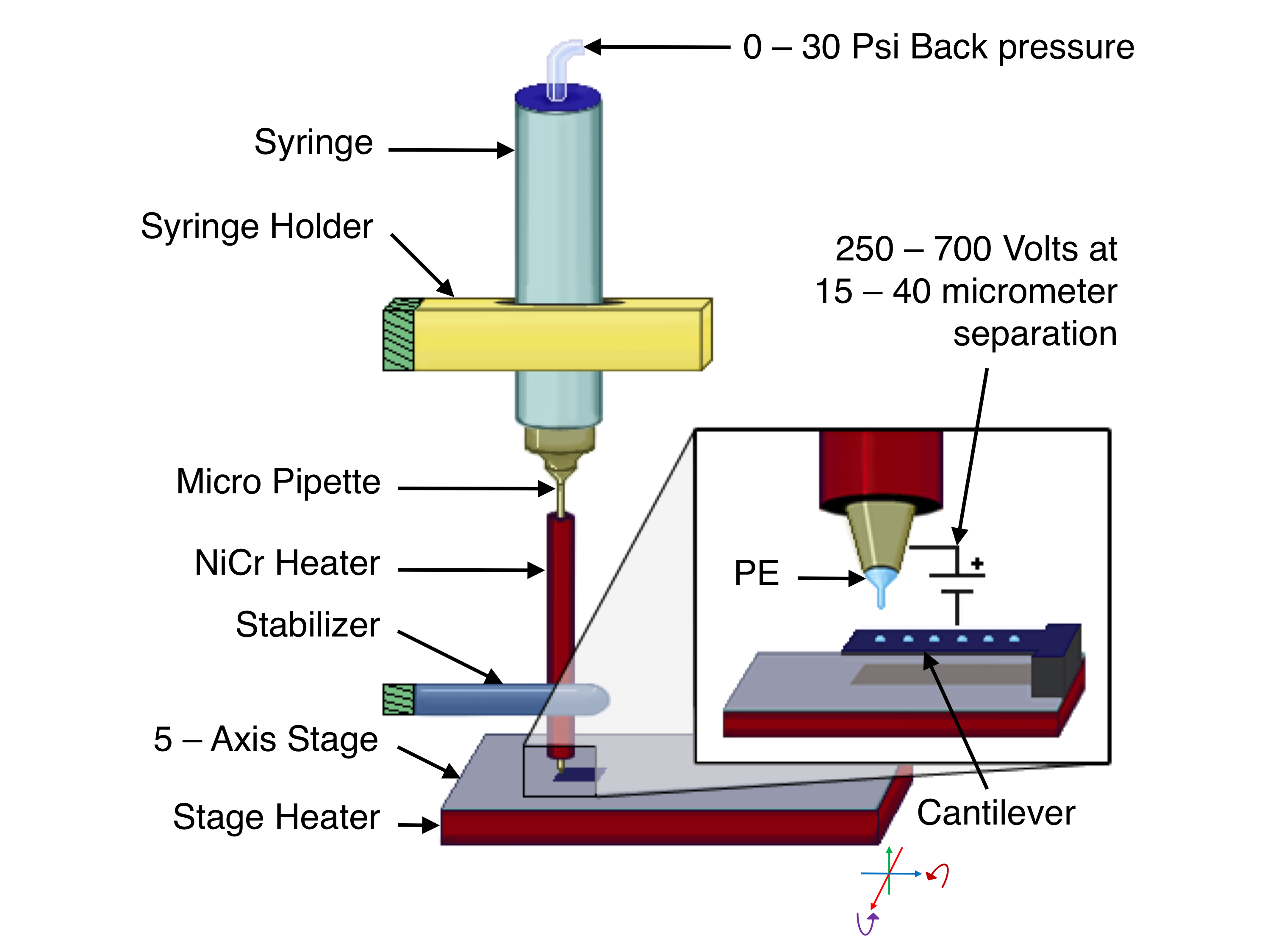Electrohydrodynamic Printing: Precise Micro and Nanoscale Fabrication
What is Electrohydrodynamic Printing?
Electrohydrodynamic (EHD) printing is an advanced fabrication technique that utilizes electric fields to precisely deposit micro and nanoscale materials onto various substrates. It offers high resolution, low material consumption, and the ability to print on both planar and non-planar surfaces, making it a versatile tool for applications in electronics, biomedicine, and nanotechnology.

How Does Electrohydrodynamic Printing Work?
EHD printing relies on the principle of electrohydrodynamics, which describes the behavior of fluids under the influence of electric fields. The key components of an EHD printing system include:
- Nozzle: A fine nozzle, typically with an inner diameter ranging from a few micrometers to hundreds of micrometers, is used to eject the printing material.
- Printing Material: The material to be printed is usually in the form of a solution, suspension, or melt. It can be a polymer, metal, ceramic, or biological material.
- High Voltage Supply: A high voltage (typically several kilovolts) is applied between the nozzle and the substrate, creating a strong electric field.
- Substrate: The substrate can be a planar or non-planar surface onto which the material is deposited. It can be a semiconductor wafer, glass, plastic, or even a biological tissue.
During the EHD printing process, the printing material is fed through the nozzle. The applied electric field induces charges on the surface of the liquid at the nozzle tip, causing it to deform into a conical shape known as a Taylor cone. When the electric field reaches a critical value, a fine jet of material is ejected from the tip of the Taylor cone and accelerated towards the substrate. The jet undergoes stretching and thinning due to the electric field, resulting in the deposition of micro or nanoscale droplets or fibers onto the substrate.
Advantages of Electrohydrodynamic Printing
EHD printing offers several advantages over conventional printing techniques:
- High Resolution: EHD printing can achieve feature sizes down to a few micrometers or even nanometers, enabling the fabrication of intricate patterns and structures.
- Non-contact Printing: The printing nozzle does not come into direct contact with the substrate, minimizing the risk of contamination or damage to the printed material or substrate.
- Low Material Consumption: EHD printing requires minimal amounts of printing material, making it cost-effective and environmentally friendly.
- Versatility: EHD printing can be used with a wide range of materials, including polymers, metals, ceramics, and even living cells. It can also print on various substrates, including flexible and non-planar surfaces.
Applications of Electrohydrodynamic Printing
EHD printing finds applications in diverse fields:
Electronics
EHD printing can be used to fabricate high-resolution electronic components, such as transistors, sensors, and displays. It enables the direct printing of conductive, semiconductive, and insulating materials onto substrates, reducing the need for complex lithography processes.
Biomedicine
EHD printing is employed in the field of biomedicine for applications such as tissue engineering, drug delivery, and biosensing. It can be used to precisely deposit living cells, proteins, and biomaterials to create artificial tissues, drug-loaded scaffolds, or biosensor arrays.
Nanotechnology
EHD printing is a powerful tool for fabricating nanostructures, such as nanofibers, nanoparticles, and nanowires. These nanostructures find applications in sensors, catalysis, energy storage, and optoelectronics.
Challenges and Future Perspectives
Despite the numerous advantages of EHD printing, there are still challenges to be addressed. One of the main challenges is the optimization of printing parameters, such as the applied voltage, nozzle size, and material properties, to achieve consistent and reliable printing results. The development of advanced control systems and in-situ monitoring techniques can help overcome these challenges.
Future research in EHD printing will focus on expanding the range of printable materials, improving the printing speed and throughput, and developing multi-nozzle systems for parallel printing. The integration of EHD printing with other fabrication techniques, such as 3D printing and self-assembly, will enable the creation of complex hierarchical structures with multi-scale features.
Further Reading
Micro and Nano Systems Letters, Electrohydrodynamic (EHD) printing of nanomaterial composite inks and their applications
Journal of Micro and Nano-Manufacturing, Electrohydrodynamic Printing for Advanced Micro/Nanomanufacturing: Current Progresses, Opportunities, and Challenges
